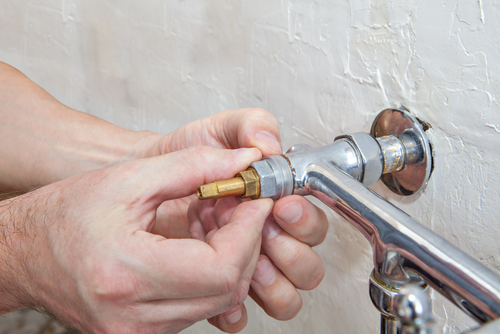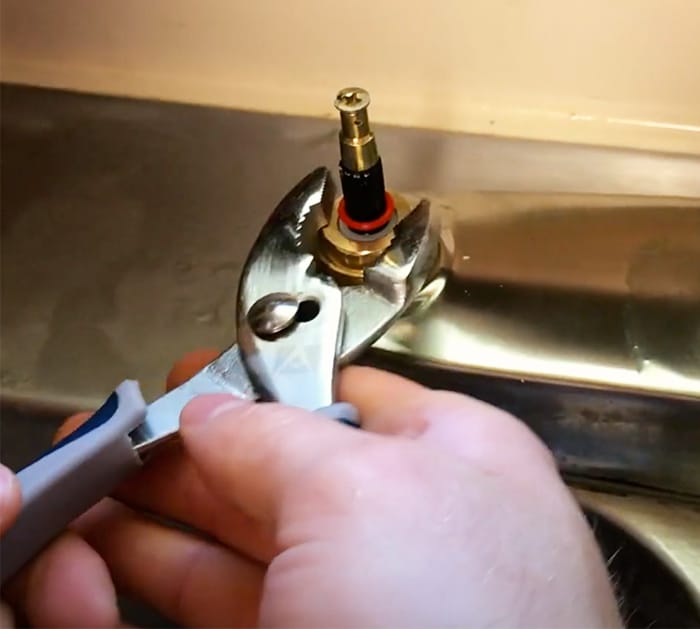An Explanations Behind Correcting a Dripping Faucet
An Explanations Behind Correcting a Dripping Faucet
Blog Article
On this page further down you will discover a bunch of extremely good expertise on the subject of Why It's Important to Fix Leaky Faucets.

Leaking faucets may look like a minor hassle, however their impact goes beyond simply the aggravation of the audio. From wasting water to sustaining unneeded monetary costs and wellness dangers, disregarding a dripping tap can cause various effects. In this post, we'll look into why it's important to resolve this typical household problem promptly and properly.
Wastage of Water
Ecological Impact
Leaking taps contribute significantly to water waste. According to the Epa (EPA), a single faucet trickling at one drip per second can throw away greater than 3,000 gallons of water annually. This not only pressures water resources but additionally influences environments and wildlife depending on them.
Financial Expenses
Increased Water Costs
Beyond the ecological impact, trickling faucets can blow up water bills considerably. The built up wastefulness over time equates into higher energy expenses, which might have been stayed clear of with timely repair services.
Potential Residential Property Damages
Additionally, long term dripping can lead to damage to components and surface areas bordering the faucet. Water accumulation can create staining, deterioration, and also structural concerns if left ignored, causing added repair service expenses.
Health Problems
Mold and Mold Development
The constant visibility of moisture from a trickling faucet develops an optimal environment for mold and mold growth. These fungis not just compromise interior air quality however additionally position health and wellness risks, especially for individuals with breathing problems or allergic reactions.
Waterborne Diseases
Stagnant water in leaking taps can come to be a breeding place for bacteria and other microorganisms, boosting the danger of waterborne diseases. Contaminants such as Legionella microorganisms thrive in stationary water, potentially causing serious health problems when ingested or inhaled.
Do it yourself vs. Professional Repair service
Pros and Cons of Do It Yourself Fixing
While some might attempt to take care of a trickling faucet themselves, DIY repair services feature their very own set of challenges. Without appropriate expertise and devices, do it yourself efforts can exacerbate the issue or bring about insufficient repairs, prolonging the problem.
Benefits of Hiring a Professional Plumber
Hiring a professional plumber ensures that the underlying cause of the dripping tap is resolved properly. Plumbing professionals have the experience and devices to identify and repair tap problems efficiently, conserving time and lessening the danger of further damages.
Step-by-Step Guide to Dealing With a Dripping Faucet
Tools Needed
Prior to attempting to fix a trickling faucet, gather the necessary devices, including a flexible wrench, screwdrivers, replacement components (such as washers or cartridges), and plumber's tape.
Usual Faucet Issues and Their Solutions
Determine the type of tap and the specific problem creating the drip. Common issues include damaged washing machines, corroded shutoff seats, or damaged O-rings. Refer to maker guidelines or online tutorials for step-by-step support on fixings.
Preventive Measures
Routine Maintenance Tips
To avoid trickling faucets, carry out routine upkeep such as cleaning up aerators, evaluating for leakages, and changing damaged components without delay. In addition, take into consideration mounting water-saving tools or updating to a lot more effective components.
Relevance of Prompt Fixes
Resolving leaking faucets as soon as they're noticed protects against additional water waste and potential damages, eventually saving both water and cash over time.
Impact on Building Worth
Perception of Well-Maintained Building
Preserving a home in good condition, including attending to maintenance problems like trickling faucets, boosts its perceived worth and worth among prospective purchasers or lessees.
Influence on Resale Value
Properties with well-kept plumbing components, including faucets, command higher resale worths in the property market. Addressing dripping faucets can add to a favorable impact throughout residential property examinations and arrangements.
Environmental Responsibility
Individual Contribution to Conservation
Taking responsibility for fixing dripping faucets straightens with more comprehensive initiatives towards water conservation and environmental sustainability. Every individual's activities jointly make a significant influence on maintaining precious sources.
Lasting Living Practices
By prioritizing timely repairs and adopting water-saving behaviors, people contribute to sustainable living techniques that benefit both present and future generations.
Verdict
Resolving a leaking faucet exceeds mere ease; it's a crucial step towards saving water, reducing monetary prices, and protecting wellness and building. Whether through do it yourself repairs or expert aid, taking action to take care of leaking taps is a tiny yet impactful way to promote accountable stewardship of sources and add to a healthier, much more sustainable future.
How to Fix a Dripping or Leaky Faucet
A leaking faucet is one of the most common problems that homeowners encounter, but it being commonplace doesn’t make it any less annoying. The constant drip drip drip of a leaking bathtub faucet, showerhead, or sink tap can disturb your home’s serenity. Left neglected, a dripping faucet can also result in higher water bills and discoloration or mold growth in your sink or plumbing fixtures.
Fortunately, you don’t have to be a trained plumber to know how to stop a dripping faucet. With some basic tools, replacement parts, and a little patience, leaky faucet repair is a breeze. In this article, we’ll explain what causes dripping faucets and how you can fix them.
What Causes a Leaking Faucet?
Kitchen and bathroom faucets come in all manner of designs, but most involve some combination of valves, O-rings, seals, and washers. The O-ring is usually the weakest link, but any one of these pieces can wear down over time. Heat, moisture, temperature fluctuations, minerals, mold, and movement can contribute to warping and corrosion, breaking the watertight seal. This just comes with the territory of being a homeowner. Everything is always subject to wear and tear, and some component parts of your appliances and fixtures need to be replaced on occasion. At least replacement O-rings are cheap!
More rarely, dripping faucets can be a symptom of excessively high water pressure. Were this the case in your home, you would probably notice that the leak is not isolated to one faucet. Water pressure issues are harder to resolve on your own. We recommend contacting a professional plumber if you suspect your water pressure is too high.
How to Fix a Dripping Faucet
Pipe wrench or monkey wrench Allen wrench set Screwdrivers Old towel or rag Shut off the water.
Before you do anything, you need to turn off the water to keep from drenching your kitchen or bathroom. You should find a valve under the sink and against the wall. Once you’ve turned this valve, try turning the faucet on to confirm that the water source has been cut off.
If you can’t locate your local valve for the faucet you’re working on, you can always shut off the water to the house at the main valve. Of course, this will prohibit anyone from using the sinks, showers, or toilets while you’re working on the faucet that’s giving you trouble.
Plug or block the drain.
You’ll be disassembling the faucet and removing some small bits of hardware. Plug the drain with a stopper or rag to avoid the possibility of a small screw falling into your P-trap.
Take apart the faucet assembly.
There are several varieties of kitchen and bathroom faucets, each with its own manner of assembly. For detailed instructions on how to disassemble your faucet, you can refer to the fixture’s manual or contact the manufacturer. If you know whether you have a ball, disc, cartridge, or compression faucet, you can find detailed schematics online.
In general, you need to begin by removing the faucet handles. You might notice a small screw that you’ll need to remove with a screwdriver or Allen wrench. If you don’t see any visible securing hardware, it’s likely hidden under a decorative cap that can be unscrewed or popped off with flathead screwdriver.
Remove each piece methodically, consulting a schematic when necessary. Take notes or arrange the pieces in such a way to make it easier to correctly reassemble the faucet later.
Remove the cartridge.
Once you’ve removed the handles and securing hardware, you should be able to remove the valve cartridge or stem. Some cartridges will slide right out. Other faucet models will require you to loosen a nut with a pipe wrench before you can remove the valve stem.
Examine the exposed hardware.
With the cartridge or stem removed, inspect the component parts. Check the rubber O-rings for wear and tear. Also examine the seat washer for corrosion or other damage. These pieces are usually the responsible parties for a dripping faucet, but it’s worth inspecting the other component parts while you have the faucet disassembled.
Find replacement parts.
Once you’ve identified which faucet component has failed, find an identical replacement. Your local hardware store should have O-rings, seat washers, and other standard components in stock. If you have a luxury or uncommon faucet, you may have to contact the manufacturer for a replacement part.
It’s a good idea to take your old parts with you to the hardware store so you can compare them with the store’s inventory and be sure you’re purchasing the correct replacement.
Reassemble the faucet.
With your new parts in hand, reconstruct the faucet and handles. Don’t be tempted to overtighten screws or nuts. You might think this could create a better seal, but it can instead damage or bend a delicate part of the assembly and create a new problem for you.
Turn on the water and test the faucet.
The only thing left to do is test your work. Unplug the sink, turn the water back on, and try the faucet. Congratulate yourself on a job well done!
https://www.libertyhomeguard.com/how-to-fix-a-dripping-or-leaky-faucet/

Hopefully you enjoyed our post on Why Are My Faucets Dripping (And Can I Fix It Myself)?. Many thanks for taking a few minutes to browse our posting. If you enjoyed reading our blog posting if you please consider to share it. Bless you for your time. Come back soon.
Report this page